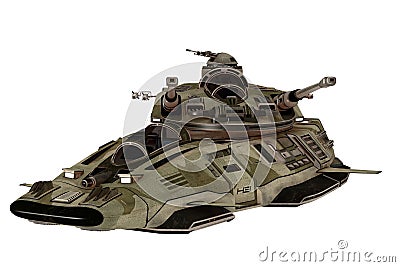Article Link
Russia’s Naval Battle Group Moves to Syria: Demonstrating Power Projection Capability
NATO is concerned about the movement of Russian naval battle group on its way to the Mediterranean.
The ships are being carefully monitored by NATO ships and aircraft.
Media in NATO countries have raised ballyhoo about it.
The reaction is negatively emotional.
The ships’ movement is covered like an unexpected event, though the news was first announced this summer.
Perhaps, many believed that Russia’s maritime power projection capability should not be taken seriously. Now those who thought so are proven wrong.
Reuters cited a diplomat saying on condition of anonymity
«They are deploying all of the Northern fleet and much of the Baltic fleet in the largest surface deployment since the end of the Cold War».
«This is not a friendly port call. In two weeks, we will see a crescendo of air attacks on Aleppo as part of Russia’s strategy to declare victory there», the diplomat said.
The Russian aircraft carrier Admiral Kuznetsov is sailing to Syria to serve as a platform for carrying out airstrikes against terrorists until at least February 2017. The ship can carry more than 50 aircraft. This time the air group’s configuration includes 15 Sukhoi Su-33 all-weather air superiority jets and Mikoyan MiG-29K/KUB multirole fighters, and 10 Kamov Ka-52K, Ka-27, and Ka-31 helicopters.
The NATO diplomat’s affirmation that “all of the Northern Fleet” joined by Baltic Fleet ships is on the way to the Mediterranean is an exaggeration, to put it mildly. The flattop is escorted by seven other ships as part of battlegroup, including Pyotr Velikiy nuclear battlecruiser, two large anti-submarine warships – the Severomorsk and Vice-Admiral Kulakov – and four support vessels.
They will join some 10 other Russian vessels already off Syria. The Baltic Fleet ships are not going to the Mediterranean. Two new Steregushchiy class Project 20380 corvettes –Boikiy and Stoikiy – just joined the group for joint exercises in the Northern Sea – nothing special, it’s a routine procedure for an ocean going navy.
Russian Zvezda TV channel reported that several submarines would probably move from the Atlantic to escort the battle group.
Strategic aviation will boost the group’s air cover capability while on the move.
True, the Air Space Forces have shouldered the burden of the operation in Syria striking most of the targets with aircraft either based in Syria or flying from bases in Russia itself. But the Navy also has a role to play in the war effort. The operation in Syria has highlighted advances in integration among the branches of the military.
The Navy provided sealift, as well as long-range air defense with the S-300 system carried by Slava-class cruiser Moskva, the Black Sea Fleet’s flagship, in the first half of the campaign. Much has been said about the demonstrated capability of Russian warships to fire long range cruise missiles at land targets in Syria from both the Caspian Sea and the Mediterranean. So far, the naval missions have been mainly carried out by the Black Sea Fleet. The group sailing to Syria is homeported in the Northern Fleet.
This will be the first ever combat deployment of Admiral Kuznetsov and the battlecruiser – the largest surface ship in the world, excluding aircraft carriers. Deployed near the Syrian shore, the multi-mission naval group will beef up the air strike power by increasing the number of jets and provide extra capabilities to counter air and submarine threats. Sea-based MIG-29K warplanes will also go through their first combat trial.
The carrier’s naval aircraft may test the new X-38 missiles in combat action. Unlike NATO ships of the same type, Admiral Kuznetsov is well armed with anti-ship, air defense, artillery and anti-submarine warfare systems. Russia is the only country in the world with such a heavily armed aircraft carrier, which does not need many escort ships – it can defend itself against a wide range of threats. More importantly, when the battle group reaches Syria, the Russian Navy will rival the firepower of the US Sixth Fleet in the region.
Few nations in the world possess the capability to deploy an aircraft carrier group at great distances from their shores. It makes Russia a member of the elite club to include the US and France and, to a limited extent, India and China. Some countries have amphibious and other air-capable ships, that can launch some aircraft, but they are no match for aircraft carriers.
Other nations will closely watch the Admiral Kuznetsov’s performance. India will reportedly shortly announce a tendering procedure for building its fourth aircraft carrier. This year, the Krylov State Research Centre, a Russian shipbuilding institute, held talks with Indian partners about eventually buying a version of Moscow’s future nuclear-powered carrier (image left), known as Project 23000E.
The project was first revealed to the public in June at the Army-2015 show near Moscow, where a scale model of the ship was exhibited. Russia will have many more chances if Admiral Kuznetsov and its sea-borne aircraft prove to be effective in combat conditions. If signed, the deal will become a boon for Russia’s ship-building industry.
Russian warships became a very rare sight after the dissolution of the Soviet Union. Overseas deployments were marked as signal events because of their rarity. Those days have become history now with the Navy ensign, the St. Andrew’s Cross, increasingly seen in the world’s harbors as a sign of Russia’s clearly visible expanded ocean presence.
Before Syria the Russian Navy had already acquired combat experience fighting pirates in the Indian Ocean near the Somalia’s coast. Today, the nation’s naval power is on the rise making great strides ahead to showcase drastic advances in its ability to carry out expeditionary operations.





